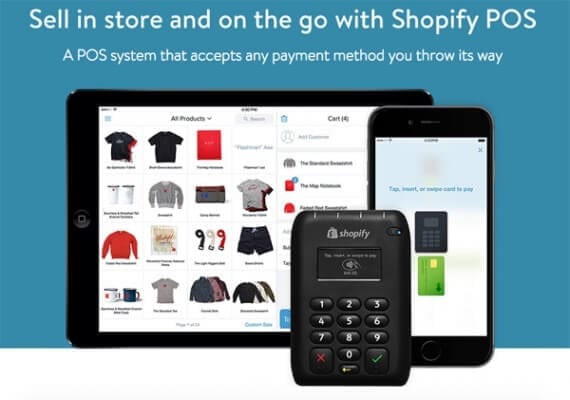More than three quarters of retailers, including large, established chain stores, plan to unify or connect the software that manages their sales and fulfillment across multiple sales channels — in just the next five years. Small retailers may be able to implement unified commerce sooner than large companies and gain something of a marginal competitive advantage.
Boston Retail Partners, a consultancy, reported in September 2015 that 78 percent of the retailers it had surveyed planned to implement some form of unified commerce platform by 2020. This type of solution can reduce labor expenses, improve workflows, and even, in some cases, improve the shopping experience — thanks to better customer service and better account information.
What Is Unified Commerce?
As a term, unified commerce describes the idea of bringing together, unifying, or interconnecting the various software solutions required to sell products across different channels into a suite or set of solutions that share information and offer a singular interface for users.
Unified commerce may also be thought of as a response to the growth of omnichannel retailing, wherein one retailer might sell to both consumers and other businesses from a physical store, an online store, a half-dozen marketplaces, and via a catalog.
“In omnichannel, you have multiple channels, but you don’t have one piece of software, one version of the truth,” said Boston Retail Partners co-founder Ken Morris in an interview. “You have many versions of the truth. In the unified commerce world, it’s all connected in real time.”
Unified Commerce Solves Many Problems
Inventory management is, perhaps, one of the easiest-to-understand examples of why unified commerce is important.
Imagine an online retailer selling the same product from its own online store and on the Amazon marketplace. Let’s also assume that this retailer has not done any integration, or unification.
To list an item on its own ecommerce site, one of the retailer’s employees must:
- Log into the retailer’s ecommerce platform;
- Fill out a few forms;
- Manually enter the quantity available (inventory on hand);
- And, in some way, publish the product.
To list the same product on Amazon, one of the retailer’s employees must:
- Log into Amazon Seller Central;
- Fill out a form with product information;
- Manually enter the product’s inventory;
- And take a couple of additional steps to post.
Clearly, there is already some duplication, since product information and inventory is manually entered into two different and disconnected software tools. But things get worse when orders start to roll in.
If the retailer has 10 widgets and lists all 10 both on its own ecommerce platform and on Amazon, it is possible to oversell.
Two orders of 3 widgets each on its own site (6 widgets), plus 3 orders of 2 widgets on Amazon (6 widgets), would make 12 widgets sold, when only 10 were really available.
It would simply be better if the retailer’s site was connected to the Amazon marketplace, so when one widget is sold, both channels know there are only nine left. In this case, unifying the systems, in a sense, solves the problem.
Small Businesses May Be Better Suited to Implement Unified Commerce
Problems like inventory management across multiple channels are the tip of the proverbial iceberg for large retail chains.
A big box retailer, as an example, will have to connect a point-of-sale (POS) system for its physical stores, an ecommerce platform, perhaps a separate B2B ecommerce site, and a call center.
This large retailer probably also has enterprise resource planning (ERP) software, purchasing tools, customer information systems, accounting solutions, warehouse management software, order processing suites, and other software reports and tools that should all share information and which are all running on different hardware with different licensing agreements.
Connecting these disparate software solutions is a significant task, which may explain why it could take some large retailers five years to implement unified commerce.
Small retailers, however, may be able to implement a unified commerce strategy more quickly.
For example, think about an online retailer that opens up a physical store. This retailer might use its existing ecommerce platform or a related solution for a POS. Many ecommerce platform makers offer just this sort of option right now.

Shopify offers an ecommerce platform and a POS solution that can share data. It is one of several companies offering this sort of service.
Given that small retailers often have relatively simpler systems, this sort of integration can be fairly easy and quick.
Similarly, a small retailer that sells from its own store and a marketplace, say Etsy, could use an order processing tool that connected both so that the person picking and shipping an order would only need to log into a single software solution to process orders from either channel.
Here again, being smaller and less sophisticated, if you will, than large omnichannel retail enterprises, may mean that small retail businesses can implement some form of unified commerce now and benefit from it.
Finally, it is also relatively easier for small retail businesses to switch commerce platforms, and there are a number of companies from NetSuite or GoECart to Mozu and Demandware that offer something of a unified commerce solution.




